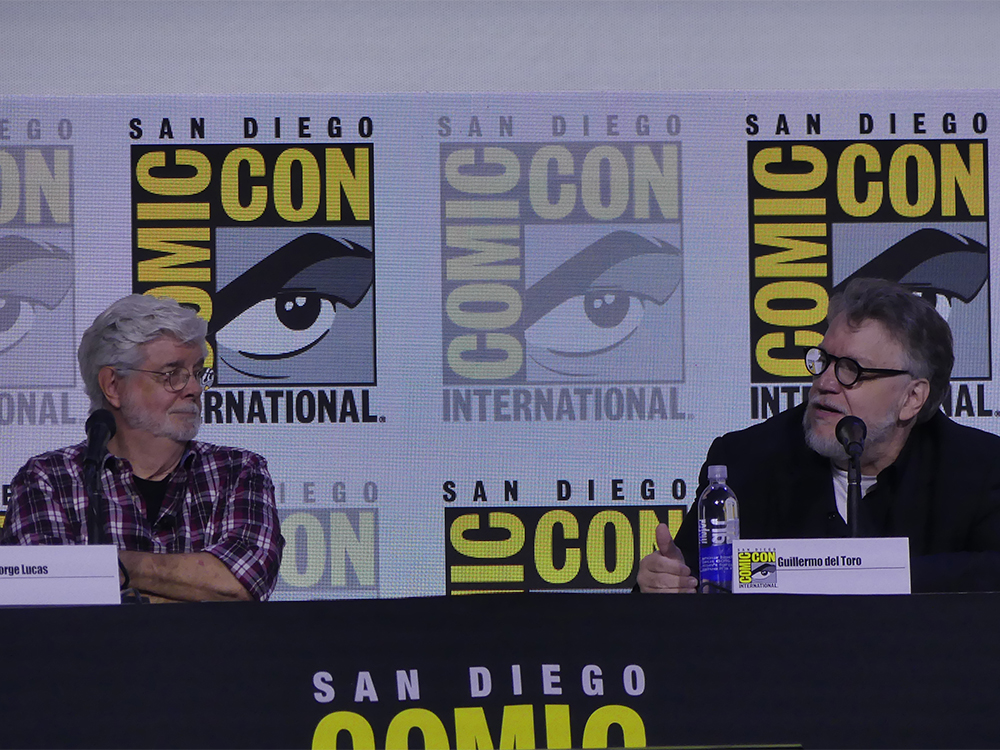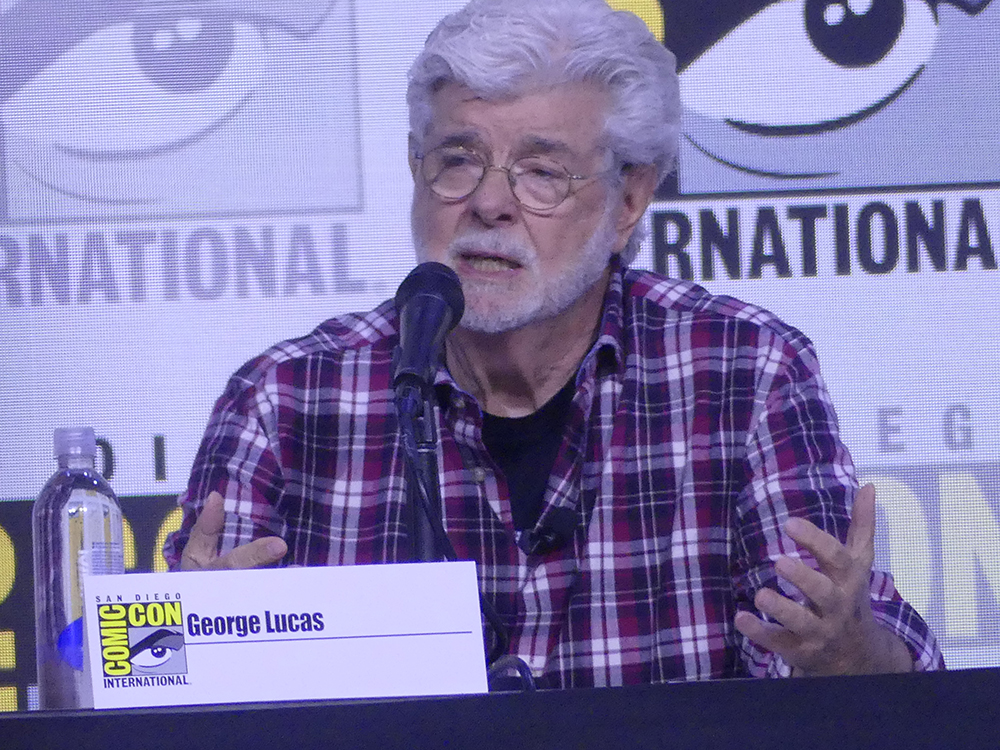Convention - SDCC 2025: Lucas Museum Panel Draws 6,000+ Fans in Celebration of Narrative Art
By Mulder, San Diego, Convention Center, Hall H, 27 july 2025

In what will undoubtedly be remembered as a defining moment in Comic-Con history, Hall H erupted in excitement as over 6,000 attendees gathered for a once-in-a-lifetime panel celebrating the power of illustrated storytelling and the much-anticipated Lucas Museum of Narrative Art. On the final day of Comic-Con International, George Lucas, legendary filmmaker and cultural visionary, took to the stage alongside Oscar-winning director Guillermo del Toro, Lucasfilm’s Senior Vice President and Executive Creative Director Doug Chiang, and multifaceted icon Queen Latifah, who moderated the event. This high-profile discussion not only drew a record-breaking crowd but also provided the audience with a compelling and deeply personal exploration into why narrative art matters—especially now.
At the center of the conversation was the Lucas Museum of Narrative Art, a revolutionary institution co-founded by George Lucas and financier Mellody Hobson, scheduled to open in Los Angeles in 2026. Set within the vibrant Exposition Park, this museum promises to be the first of its kind—wholly dedicated to narrative art in all its forms, from ancient cave paintings and Renaissance masterpieces to comic books, graphic novels, animation, digital concept art, and cinematic storytelling. Designed by renowned architect Ma Yansong of MAD Architects, with support from Stantec and landscape design by Mia Lehrer of Studio-MLA, the 300,000-square-foot building will house galleries, two theaters, a research library, classrooms, public green spaces, and a café, all located on an expansive 11-acre campus.

Opening the panel with heartfelt reflections, George Lucas shared his decades-long commitment to collecting narrative art and explained the philosophical vision behind the museum. “Society cannot exist without a common belief system. And that’s where illustration is vital—to show you what that means in everyday life,” Lucas said. He described the museum as “a temple to the people’s art,” underlining the role of visual storytelling in shaping shared culture and collective memory. The museum’s mission, Lucas emphasized, is not to create a hierarchical distinction between high and low art, but to showcase the emotional and historical depth found in illustrated narratives of all kinds.
Adding his own unique perspective, Guillermo del Toro, who sits on the museum’s board of directors, passionately argued that art should not be placed on a pedestal that excludes popular or “unconventional” genres. “Imagine if we only had classical music, and rock-n-roll was never created? This is rock-n-roll, and rock-n-roll needs to be enshrined,” del Toro said, drawing loud applause. His comparison underscored the spirit of inclusion at the heart of the museum’s curatorial vision, one that embraces comic books, movie concept art, pulp illustration, and contemporary digital imagery as valid and essential forms of human expression.

Doug Chiang, whose work with Lucasfilm spans decades and includes concept design for Star Wars, reflected on how comics and magazines shaped his creative trajectory. “Comic art and magazine illustration were kind of looked down upon… but it was a way for me to enjoy art, and it invited me to learn more,” he said. Chiang praised the museum for offering a platform to elevate artists who have been historically overlooked by traditional institutions. He also teased that the museum will include rare concept pieces and illustrations from the Lucas Archive, ranging from storyboards to costume designs, which will provide a comprehensive look at how visual development shapes cinema.
Queen Latifah, serving as moderator, brought levity, insight, and personal passion to the discussion. Drawing from her own background in music, film, and visual storytelling, she emphasized the emotional connection that binds the audience to the art: “The connection that I hear in our various conversations is emotion—an emotional connection that the art evokes from you. That's one of the most important things to never forget,” she said. Her remarks seamlessly tied together the panel’s themes, underscoring that the museum isn’t just about art, but about the shared human experiences those artworks capture. Latifah also revealed a few exciting details about the museum’s collection, which will include the first-ever Flash Gordon comic strip, a 1968 Black Panther splash page, and Peanuts originals from the 1950s and 60s, among many other cultural treasures.

The panel culminated in a resounding standing ovation, a visible and audible testament to how deeply the conversation resonated with the Comic-Con crowd. Many attendees remarked on social media that this was one of the most emotional and important panels in recent memory—one that championed the transformative power of stories told through pictures, panels, and pixels. With its groundbreaking approach to storytelling across cultures and mediums, the Lucas Museum of Narrative Art promises to become a cornerstone of cultural exploration in the 21st century.
Scheduled to open its doors in 2026, the Lucas Museum’s permanent collection will include thousands of pieces by artists such as Norman Rockwell, Kadir Nelson, Jessie Willcox Smith, Beatrix Potter, Maxfield Parrish, and N.C. Wyeth. On the comic book side, it will highlight trailblazers including Winsor McCay, Frank Frazetta, George Herriman, Jack Kirby, Chris Ware, Alison Bechdel, and R. Crumb. The museum will also serve as the home of the Lucas Archive, offering fans and scholars rare access to film artifacts spanning George Lucas’s entire cinematic legacy, from Star Wars to Indiana Jones and beyond. More information is available at www.lucasmuseum.org, the museum’s official website

You can discover our photos in our Flickr page here and here
Photos and video : Boris Colletier / Mulderville

